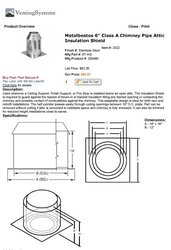- Dec 1, 2005
- 71
not quite on topic, ut want t take advantage of the collective wisdom here.
I'm insulating an unfinished space and want to do it effectively and cheaply. Its an old building so the framing is pretty irregular and unevenly spaced so fiberglass would be a big hassle cutting and fitting, etc. I'm thinking cellulose, but want to do it myself for as little as possible. do people have experience w/ loose fill in unfinished walls? my understanding is you staple a poly vapor barrier tight and blow into the cavities until its densely packed. does this make for big bulging and problems installing drywall after? would this be a problem with spaces between studs in excess of 20 inches? I know I could just use wet fill, but I think this requires a pro and therefore more $$
Also, I've heard that loose fill in a vented attic can drift. I'm going to run class-a chimney through the attic. should I worry about drifts building up over the attc sheild? I suppse the solution there is to build a chase. thoughts on this? also, if drifting really ocurs, seemsto me this would result in thin spots, thus compomising insulation, yes? how is this issue dealt with?
thanks
I'm insulating an unfinished space and want to do it effectively and cheaply. Its an old building so the framing is pretty irregular and unevenly spaced so fiberglass would be a big hassle cutting and fitting, etc. I'm thinking cellulose, but want to do it myself for as little as possible. do people have experience w/ loose fill in unfinished walls? my understanding is you staple a poly vapor barrier tight and blow into the cavities until its densely packed. does this make for big bulging and problems installing drywall after? would this be a problem with spaces between studs in excess of 20 inches? I know I could just use wet fill, but I think this requires a pro and therefore more $$
Also, I've heard that loose fill in a vented attic can drift. I'm going to run class-a chimney through the attic. should I worry about drifts building up over the attc sheild? I suppse the solution there is to build a chase. thoughts on this? also, if drifting really ocurs, seemsto me this would result in thin spots, thus compomising insulation, yes? how is this issue dealt with?
thanks


